From North to South: Best Travel Destinations to Explore in India
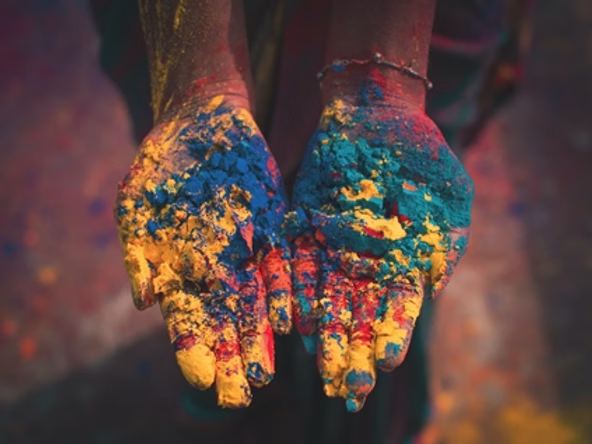
India, a mosaic of peoples, places, and customs, entices visitors from all over the world with its alluring variety and breathtaking beauty. This enchanted country offers a wealth of travel experiences that are as different as they are breathtaking, spanning from the majestic Himalayan peaks to the peaceful Indian Ocean coasts. Join us as we travel virtually the whole length and breadth of this magnificent nation, exploring its rich tapestry of sights, sounds, and tastes. India promises an extraordinary trip that will leave an indelible impact on your soul, from the mysterious realms of the north to the tropical delights of the south. India’s unmatched diversity and spectacular beauty are what make it so appealing as a tourism destination. Every region of this country has something special to offer, from the historical sites in the north to the spiritual havens in the east and the tropical splendour in the south. Embrace India’s colourful tapestry, where age-old customs and cutting-edge technology coexist, and set out on a tour that will stimulate your senses and leave you with lifelong memories. We would love to provide you with a curated list of of the best travel destinations spanning from North to South India. Credit: Unsplash Delhi: Exploring the Capital’s Rich Heritage Delhi, the vivacious capital of India, is a city that skillfully combines its significant historical past with a contemporary global vibe. Delhi provides a thorough travel experience that captures the spirit of the nation with its stunning monuments, vibrant markets, delectable street food, and engaging museums. Delhi has an impressive historical past, which is reflected in its magnificent monuments. The Red Fort, a UNESCO World Heritage Site that housed Mughal rulers for almost 200 years, is one of the city’s most recognisable features. Wander around the expansive gardens, explore the towering red sandstone walls, and take in the complex design of the Diwan-i-Aam (Hall of Public Audience) and Diwan-i-Khas (Hall of Private Audience). In the evening, take in the captivating sound and light show that brings the fort’s history to life. Credit: Unsplash The imposing Qutub Minar, a UNESCO World Heritage Site and the tallest brick minaret in the world, is another must-see landmark. Explore the exquisite carvings and stunning architecture of this historic Islamic building, which serves as a reminder of Delhi’s illustrious history. Visit the nearby Qutub Complex to see the Iron Pillar and other historical buildings like the Alai Darwaza. Credit: Unsplash The lively markets in Delhi are well known for providing a sensory experience. Visit Chandni Chowk, one of Old Delhi’s largest and oldest markets, where quaint pathways are lined with stores offering everything from gadgets and spices to clothing and jewellery. Get lost in the colourful pandemonium, bargain with store owners, and take in the upbeat mood. Don’t forget to try some of Delhi’s world-famous street cuisine, including its tantalising chaat (savoury appetisers), fiery kebabs, and tempting sweets like jalebi and rabri. Delhi provides a variety of lodging choices to fit every need and preference. There are many options for travellers, from opulent five-star hotels to affordable guesthouses and hostels. Connaught Place, Karol Bagh, and South Delhi are popular lodging choices since they provide easy access to the city’s top sights and transportation hubs. Delhi provides a thorough travel experience that truly captures the spirit of India with its historical significance, cultural attractions, busy markets, mouthwatering street food, and interesting museums. Experience the architectural magnificence of buildings like the Red Fort and Qutub Minar, stroll through the vibrant markets of Chandni Chowk, savour the savoury street food, and explore the museums to learn more about the city’s extensive cultural history. With a variety of lodging options and accessible transportation, seeing Delhi is a memorable trip that leaves visitors with enduring memories of this alluring city. Jaipur: The Pink City’s Royalty and Charm The colourful city of Jaipur, also known as the Pink City of India, captivates tourists with its extensive history, magnificent architecture, and extravagant culture. Jaipur offers a mesmerising fusion of traditional enchantment and contemporary energy. It is known for its majestic palaces, intricate handicrafts, and delectable cuisine. Without visiting the magnificent Amer Fort, which is situated just outside of the city of Jaipur, a trip there is not complete. This UNESCO World Heritage Site, which is surrounded by the Aravalli hills, is impressive due to its detailed carvings, gorgeous mirror work, and large courtyards. Take a jeep or elephant ride up to the fort to experience the splendour of the Rajput style of construction. Credit: Unsplash Other prominent forts in Jaipur are Nahargarh Fort and Jaigarh Fort, each of which has a distinctive beauty and historical significance. These forts transport you back in time to the era of Rajput bravery and splendour while providing sweeping vistas of the city. Shopping in Jaipur is a delight, especially for those seeking out authentic Rajasthani crafts. Visit the crowded markets of Bapu Bazaar and Johari Bazaar to find a wide selection of pottery, handicrafts, jewellery, and textiles. Don’t pass up the chance to buy the renowned Jaipur blue pottery, block-printed clothing, and fine silver jewellery. Consume the regional food of Jaipur to experience the true flavours of Rajasthan. Try the well-known Dal Bati Churma, which combines baked wheat dumplings, lentils, and sweet bread crumbs. Laal Maas, a fiery red beef curry, and delectable desserts like Ghewar and Ghevar are other local specialties. For a complete gastronomic experience, try these exquisite dishes at reputable diners and nearby restaurants. Jaipur provides a selection of lodging choices to meet the requirements of every traveller. There are options to suit every preference, from opulent heritage hotels housed in old palaces to affordable guesthouses and boutique hotels. The locations of Johari Bazaar, Bani Park, and Civil Lines are well-liked for being close to important attractions and offering a variety of lodging options. With its gorgeous palaces, impressive
Mindful Travel: A Guide to Slow and Sustainable Travel in India
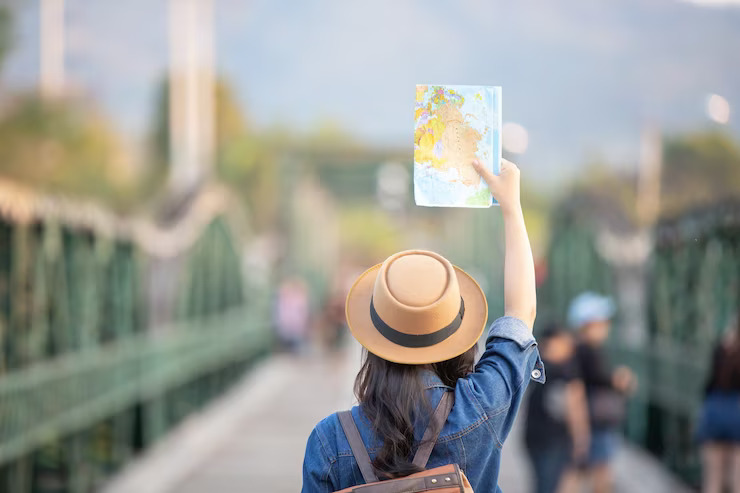
Introduction: In a world filled with fast-paced travel itineraries and overcrowded tourist attractions, there is a growing movement towards a more mindful and sustainable approach to travel. Mindful travel encourages us to slow down, immerse ourselves in the local culture, and have a positive impact on the places we visit. With its rich heritage, diverse landscapes, and vibrant communities, India offers a perfect canvas for mindful travel experiences. This guide aims to introduce you to the concept of mindful travel and provide insights into how you can embark on a slow and sustainable journey through India. By embracing mindfulness, we can cultivate a deeper connection with the destinations we explore, interact with local communities respectfully, and minimize our environmental footprint. From experiencing ancient traditions in spiritual hubs like Varanasi and Rishikesh to exploring off-the-beaten-path destinations like Hampi and Mawlynnong, we will delve into the beauty of India’s diverse regions and offer suggestions for immersive and sustainable activities. By practicing mindful travel, we can create meaningful memories, support local economies, and contribute to the preservation of India’s cultural and natural heritage. So, let’s embark on a journey that nourishes the soul and leaves a positive impact on the world around us. Understanding Mindful and Sustainable Travel Mindful and sustainable travel goes beyond merely visiting popular tourist attractions and ticking off items on a checklist. It is an approach that emphasizes connecting with the local culture, minimizing environmental impact, and supporting local communities. By practicing mindful travel, we can foster a deeper understanding and appreciation of the destinations we visit while leaving a positive legacy for future generations. Mindful travel encourages us to slow down, be present at the moment, and engage with our surroundings. It involves immersing ourselves in local traditions, trying authentic cuisine, and interacting with local communities in a respectful and meaningful way. This may include participating in cultural activities, volunteering for local initiatives, or supporting local artisans and businesses. Sustainable travel focuses on reducing our ecological footprint and preserving the natural environment. This can be achieved by choosing eco-friendly accommodations, opting for public transportation or cycling instead of relying on private vehicles, and practicing responsible waste management. It also involves respecting wildlife and natural habitats, refraining from activities that exploit animals, and supporting conservation efforts. In India, mindful and sustainable travel can take various forms. It can mean exploring rural villages and promoting community-based tourism, engaging in eco-trekking and wildlife conservation activities or supporting local artisans and craftspeople. By embracing these principles, we can ensure that our travel experiences in India are not only enriching for ourselves but also contribute positively to the cultural, social, and environmental fabric of the country. Research and Planning Research and planning are essential for a mindful and sustainable travel experience in India. Here are some key steps to undertake: Destination Research: Begin by researching different destinations in India that align with your interests and values. Look for places that offer opportunities for cultural immersion, sustainable activities, and eco-friendly accommodations. Consider the environmental and social impact of tourism in the area and choose destinations that promote responsible tourism practices. Local Culture and Customs: Familiarize yourself with the local culture, traditions, and customs of the places you plan to visit. This will enable you to respect and appreciate the local way of life and mindfully interact with the community. Learn a few basic phrases in the local language to communicate and connect with the locals. Sustainable Accommodation: Look for accommodations that prioritize sustainability, such as eco-lodges, homestays, or hotels with green certifications. Check if they have initiatives in place to conserve energy and water, minimize waste, support the local economy, and preserve the natural environment. Consider staying in locally-owned establishments to contribute directly to the community. Transportation: Choose sustainable transportation options to minimize your carbon footprint. Whenever possible, opt for public transportation, walk, or cycle to explore the destinations. If long distances need to be covered, consider taking trains instead of flights as they are more eco-friendly. Responsible Activities: Engage in activities that promote sustainability and respect for local resources. Support local artisans and businesses by purchasing locally-made souvenirs and handicrafts. Be mindful of wildlife encounters and choose responsible wildlife tourism options that prioritize animal welfare and conservation. Waste Management: Be conscious of your waste generation and practice responsible waste management. Minimize the use of single-use plastics, carry a reusable water bottle and shopping bag, and dispose of waste properly in designated bins. Respect for Nature: Respect the natural environment and wildlife by following designated trails, not disturbing flora and fauna, and adhering to responsible ecotourism practices. Avoid activities that exploit animals or contribute to habitat degradation. Engage with Local Communities: Interact with local communities in a respectful and meaningful way. Learn about their traditions, support local initiatives and social enterprises, and engage in community-based tourism activities. Respect local customs, dress codes, and etiquette. By conducting thorough research and planning, you can ensure that your travel experiences in India are mindful and sustainable, and leave a positive impact on the environment and local communities. Engaging with Local Communities Engaging with local communities is a key aspect of mindful and sustainable travel in India. It not only enriches your travel experience but also promotes cultural exchange, fosters mutual understanding, and supports the local economy. Here’s why engaging with local communities is significant and some responsible ways to do so: Cultural Exchange: Interacting with locals allows you to gain a deeper insight into their way of life, traditions, and customs. It promotes a mutual exchange of knowledge, ideas, and perspectives, fostering cultural understanding and appreciation. It can also challenge preconceived notions and stereotypes, promoting a more inclusive and tolerant mindset. Respect and Sensitivity: When engaging with locals, it is important to respect their traditions, customs, and social norms. Observe and follow appropriate behavior, dress modestly if required, and be mindful of local sensitivities. Show genuine interest in their culture, ask questions respectfully, and be open to learning from their experiences. Learning from Locals: Locals
Tips And Tricks for a Solo female traveler
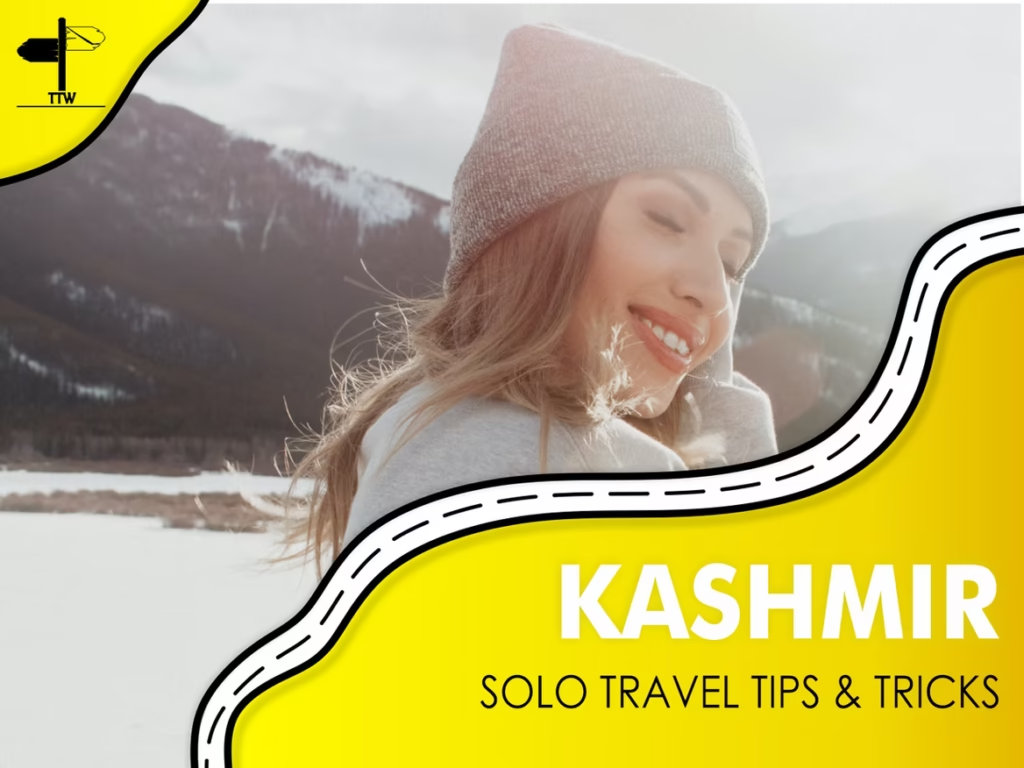
A solo female traveler faces many encounters anywhere in the world and feels a little bit nervous about it, few questions might be popping into your head, Is Kashmir safe to travel for a solo female traveler? Can I travel to Kashmir Alone? What is the safest city to travel to for solo female travelers in Kashmir? Traveling solo as a woman can be an exciting and empowering experience nearly two-thirds of today’s travelers are women, but it’s also natural to have some concerns about safety and comfort. Fear not! With a little planning and preparation, you can set yourself up for a successful and enjoyable solo trip to Kashmir or anywhere in the world. In this blog post, we’ll share some tips and tricks for solo female travelers to help you feel confident and prepared for your journey. From packing the right gear to staying safe and healthy, we’ve got you covered. Whether you’re a seasoned solo traveler or a first-timer, these tips will help you make the most of your trip. So, let’s get started! Key Highlights: – Do your research Make copies of important documents Stay connected Be aware of the surroundings Stay healthy Meet new people Embrace solo travel Don’t be afraid to ask for help Pack Smart Have a backup plan Read, Watch & Save Prepare a schedule Do your research Credit: pexel.com Before you go to Kashmir or anywhere in the world Alone, it’s important to familiarize yourself with your destination and any potential safety concerns. Look into the local culture and customs, as well as any areas that might be off-limits or unsafe for solo female travelers in Kashmir. It can also be helpful to read reviews from other solo female travelers who have toured Kashmir or the place you want to visit recently or join online groups or forums to get their insights and advice. Make copies of important documents Credit: pexel.com It’s a good idea to make copies of your passport, insurance documents, and any other important papers and leave them with a trusted friend or family member. That way, if you lose your originals, you’ll have a backup. You can also keep electronic copies in a secure location, such as a password-protected file on your computer or a secure email account. Stay connected Credit: pexel.com It’s important to have a way to stay in touch with loved ones while you’re traveling alone in Kashmir, make sure you have a fully charged phone with an international calling plan, and consider bringing a portable charger or power bank to keep your phone charged on the go. It’s also a good idea to let a trusted friend or family member know your itinerary and check in with them regularly. Be aware of your surroundings Credit: pexel.com It’s always a good idea to stay alert and aware of your surroundings, especially when traveling solo. Trust your instincts and remove yourself from the situation if something doesn’t feel right. Avoid walking alone at night and try to stick to well-lit, busy areas. It can also be helpful to carry a personal alarm or pepper spray for added security. Stay healthy Credit: pexel.com Solo travel can be exciting and exhausting, so taking care of yourself while you’re on the road is important. Stay hydrated, get plenty of rest, and don’t be afraid to take breaks when you need them. It’s also a good idea to research local health concerns and consider getting any necessary vaccinations before your trip. Meet new people Credit: pexel.com Traveling solo doesn’t mean you have to be alone. Join tours, or group activities, or simply talk with locals or other travelers. Not only will this help you feel less lonely, but it can also be a great way to learn about your destination and make new friends. Embrace solo travel Credit: pexel.com Finally, remember that traveling solo can be a great opportunity to challenge yourself and learn more about yourself. Embrace the independence and freedom that solo travel brings and make the most of your trip. Don’t be afraid to try new things and step outside your comfort zone – it’s all part of the adventure! Don’t be afraid to ask for help Credit: pexel.com if you need assistance or have any questions, don’t be shy to ask someone for help. You can also seek out resources like tourist information centers or embassy staff if you need advice or support on how to travel safely as a female solo traveler in Kashmir Pack smart Credit: pexel.com When packing for your trip, think about the items that will make your trip more comfortable and convenient. A money belt or hidden wallet can help keep your valuables safe, and a doorstop or portable alarm can give you some extra peace of mind when staying in unfamiliar places. It’s also a good idea to bring copies of important documents, such as your passport and insurance information. Have a backup plan Credit: pexel.com Let someone back home know your itinerary. It’s always a good idea to have a trusted friend or family member who knows your travel plans and can check in on you. Read, Watch & Save Credit: pexel.com Read some personal blogs and articles on solo female travelers who have recently visited Kashmir and watch out for their latest experience of Kashmir as a Solo traveler. This will boost your confidence with some real travels goal, and also give you a glimpse of package details & best places to visit Kashmir as a solo female traveler. Prepare a schedule Credit: pexel.com Bookmark or take screenshots of places near your hotel including monuments, local events, and the best place to visit nearest to your hotel as a solo female traveler in Kashmir, do not forget to leave a review back so that it will be helpful for a solo female traveler like you. With a little planning and preparation,
TOP NORTH GOA HOTELS WITH PRIVATE BEACH

Are you hunting for north Goa hotels with private beaches or resorts that offer numerous types of accommodations to choose from, including beach hotels, small seaside bungalows, campfires, couple-friendly accommodations, and everything in between? The key to selecting the best north Goa hotels with private beaches is to balance needs with what is available. It helps to identify which factors are most important, which may include location, convenience, and amenities, but making the final decision based on reviews is still hectic. Rest assured, The Tarzan Way offers a streamlined AI-based solution for finding the perfect Goa hotel with a private beach, catering to a variety of needs and budgets. Select from our carefully curated and extensively researched list of the top north Goa hotels with private beaches, handpicked for your convenience, or talk to our representative and get the best itinerary quotes for north Goa hotels that offers a truly private beach experience. CALL US North Goa is home to some of India’s most beautiful beaches; the coastline is sprinkled with white-sand beaches, some buzzing with tourists while others are more secluded and private. Watching the sunset over the calm waters and the tall palm trees soar through the clear blue skies will take your breath away. Suppose you’re eager to explore North Goa’s hotels with private beaches and its many things to do, from Colonial architecture to vibrant nightlife. Why not make it an unforgettable experience and check out one of the top Goa hotels with private beaches in India? Keep reading to see what these beachfront hotels and resorts have to offer besides their manicured gardens and elegant interiors. Best north goa hotels that offer private beaches: – Hotel Hill Rock Goa The Ivy Anjuna Beleza By The Beach Taj Resort & Convention Centre Goa Chalston Beach Resort Amoravida ATS – Arambol Hotel Hill Rock Goa Credit: justdial.com Hill Rock a Retreat Resort, one of the hotels with a private beach in Goa, is nestled on a hilltop amidst palm trees and sweeping views of the Tiracol river and the Arabian Sea. The natural and tranquil surroundings of Hill Rock are the perfect respite for city dwellers looking for some peace and quiet. With 18 well-appointed rooms, a full-service restaurant, two beautiful pools, and hammocks on the lush lawns, you’ll be transported to a world of tranquility where chirping birds and the sound of the sea serve as music and the endless ocean sky serves as a backdrop. Watch the sunset over the Arabian Sea as you sip your favorite beverage or laze by the pool. Come nightfall, marvel at the sky full of stars, illuminating the Arabian Sea beneath it. The rooms of this hotel with a private beach in Goa are elegantly furnished, with comfortable mattresses, a wardrobe, and an attached bathroom. INR 2200 / Night The Ivy Anjuna Credit: ivyanjuna.com/gallery-page The Ivy Anjuna, a North Goa hotel with a private beach, is the ultimate destination for discerning travelers looking for a secluded and exclusive beach experience. With its sleek and modern design, this North Goa hotel with a private beach offers a chic and sophisticated atmosphere that is perfect for a relaxing and indulgent getaway. The hotel’s private beach is the perfect spot to soak up the sun, swim in the sea, and enjoy the beautiful views. The hotel’s rooms are beautifully appointed and feature contemporary decor with a touch of traditional Indian accents. The hotel, a North Goa hotel with a private beach, also features a wide range of amenities and services, including a spa, a fitness center, and multiple dining options, making it the perfect choice for those looking for a luxurious and unforgettable experience in North Goa. INR 6500 / Night Beleza By The Beach One of the finest North Goa hotels with a private beach offers a secluded retreat just 25 minutes away from Dabolim Airport and in close proximity to the shopping center of Colva Promenade. The hotel provides a perfect getaway from the monotony of everyday life with its private beach, outdoor pool and spa, and sauna facilities. Guests can indulge in the variety of international cuisines served at the two on-site restaurants and enjoy the North Goa hotel’s private beach. It is the perfect destination for those seeking a luxurious and relaxing stay among the North Goa hotels with private beaches. INR 8437 / Night Taj Resort & Convention Centre Goa Credit: www.tajhotels.com An epitome of grand architecture and gracious hospitality, this 5-star North Goa hotel with a private beach features a seafood restaurant and lounge bar, an ornate lobby with landscaped gardens to the north of the beach, and an elevated deck overlooking the infinity pool. Their state-of-the-art suites come with stately décor and living rooms with chandeliers. You can enjoy revitalizing treatments at their Jiva Spa and take a dip on the private beach of the North Goa hotel. This North Goa hotel with a private beach offers a perfect blend of luxurious amenities and seclusion, making it an ideal choice for travelers looking for a private beach experience in North Goa. INR 17900 / Night Chalston Beach Resort Credit: thegoaexperience.com Charleston Beach Resort, situated in North Goa, is a family hotel with a private beach and provides a comfortable setting while in Calangute. It also features a safe, laundry facilities, and an outdoor pool. Charleston Beach Resort Calangute offers a currency exchange, a car rental desk, and a 24-hour reception. Airport transfers and a wake-up service are available upon inquiry. Charleston Beach Resort, a North Goa hotel with a private beach, has 120 spacious rooms offering all the necessities to ensure a comfortable stay. Those staying at Charleston Beach Resort Calangute can dine on Indian dishes at the in-house bar, conveniently located for a meal and a drink. A selection of dining is also available in the surrounding area. The resort, a North Goa hotel with a private beach,
Spiti Valley best time to visit in 2023
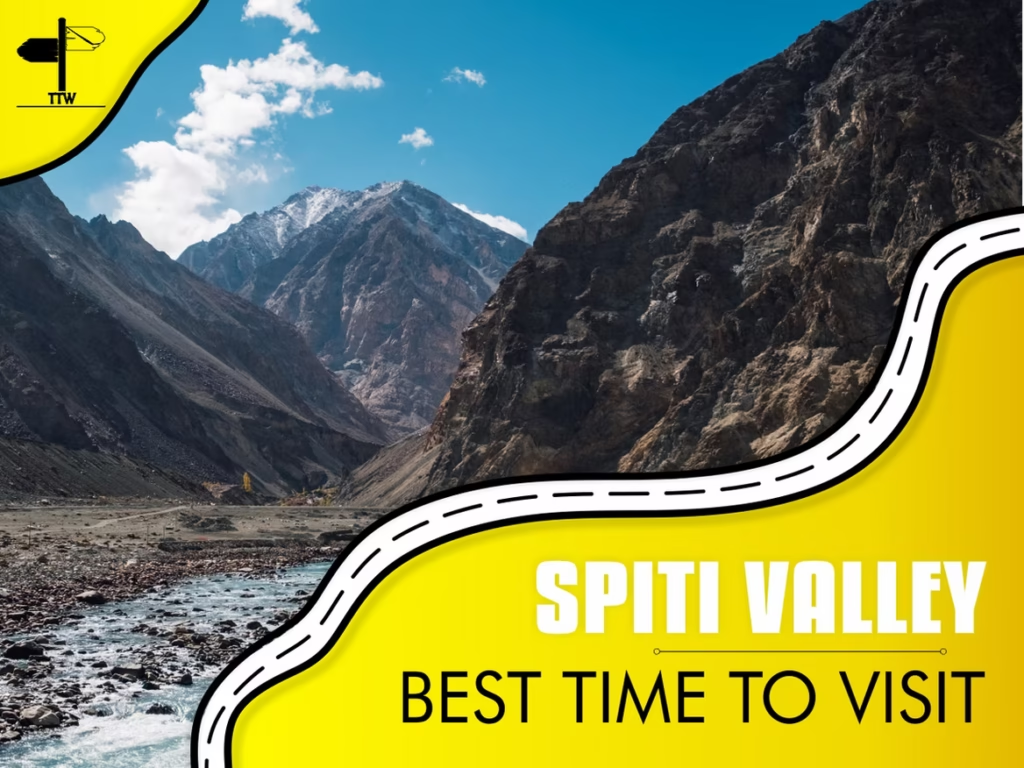
Travel to Spiti Valley at the best time to visit famous Monasteries, Parks, Villages, and Markets & enjoy local dishes with once in a lifetime experience of river rafting in Kullu valley. Spiti Valley is such an exciting place to visit for its natural beauty and cultural heritage. The high mountain passes, still, blue lakes, mother nature, and gushing waterfalls add to the charm of the place when you visit Spiti valley on the right and best time with complete travel or visit guide, information on tour package, things to do, attractions and stays in Spiti Valley. Planning your trip with locals in Spiti Valley. Don’t be concerned, we’ve got you covered. Check out our guide on the best time to visit Spiti Valley to know when there is fantastic weather and a beautiful season to explore the beauty of Lahaul Spiti Valley. Highlight: About Spiti Valley Things to do in Spiti Valley Things to avoid in Spiti Valley How to pack for Spiti Valley Spiti Valley Best Time To Visit in 2023 A brief itinerary for Spiti Valley Best way to explore Spiti Valley Where to stay in Night at Spiti Valley Estimate Travel Cost for Spiti Valley About Spiti Valley Credit: unsplash The Spiti Valley, located in the northeastern part of Himachal Pradesh, a piece of land between Tibet and India, is one of the coldest desert mountain valleys in India. This sparsely populated valley on the Tibetan Plateau showcases the rich culture of Buddhist traditions. Most adventure seekers and trekkers are well-versed in the allure of this destination and have made Spiti Valley a regular stop. This area is home to small villages, monasteries, pristine rivers, green meadows, snow-capped mountains, and friendly locals who live a simple life! Convince your mind and heart to join you on a colorful adventure and go now! Things to do in Spiti Valley Credit: freepik.com Spiti is home to some of the most important Buddhist monasteries in the world. The three most important monasteries are Tabo Monastery, Dongyu Gompa, and Key Gompa. Make a point of visiting at least one of these. One of the best ways to experience life in Spiti Valley is to explore the different villages dotted around the valley. Each village has its own unique character and sights worth seeing. Some of the most popular villages to visit are Kaza, Langza, and Hikkim. Spiti Valley is home to some of the most beautiful lakes in the world. Some of the most popular ones to visit are Chandratal, Suraj Tal, and Pin Tal. While ascending this lovely valley, look out your window at the charming little villages and scenic mountain passes that will make your ride more memorable. When you arrive in Spiti, explore the dozens of monasteries and breathtaking lakes, as well as participate in local activities and festivities that are sure to lift your spirits! Things to avoid in Spit Valley Credit: freepik.com Spiti valley is one of those once-in-a-lifetime spots for many. Incredibly remote, vastly away from man-made environment vastly different from the rest of India, and challenging to reach but try to avoid below: A Spiti valley trip is best enjoyed when you visit it at the best time, Enjoy the surroundings never try to rush and travel hundreds of kilometers in a day. Spiti is unlike anywhere else you’ve ever been the road is always under construction so it’s better to be late than never, Spiti Valley is a high-altitude place throughout the valley and is not something to take lightly. Not trying local food is your biggest mistake as you are missing some world-famous mouth-watering dishes you will love a lot. Spiti valley is known for its sweet weather but that is not the case for nights as this place’s temperature drops rapidly to zero degrees in a matter of time so always avoid packing less warm clothes. Do not drive at night the road throughout Spiti is perilous, to say the least, and you should definitely not drive on them, especially at night. How to pack for Spiti Valley Credit: pexels.com Preparing for Spiti Valley is not just about packing a bag and leaving; it requires solid planning in advance. Situated in the northeastern part of India, covered with snow-capped mountains, one needs to carry the right woolen clothing and accessories for high-altitude treks. During the day, you may need to put on light layers (woolen and cotton clothes) and add thermals or heavy jackets at night. Regular jeans, thick trousers, a pair of socks, caps, scarves, trekking shoes, sunglasses, full-sleeved shirts, sweatshirts, gloves, mufflers, and fleece jackets all depend on the season you choose to visit Spiti. Spiti Valley best time to visit in 2023 Image by jcomp (freepik.com) Summers are the best time to travel to Spiti Valley and enjoy its warm and pleasant temperature of 25 degrees during the day with a nightly drop of 3-4 degrees. Before the arrival of summer, the roads are blocked by heavy snowfall and are, hence, closed. Tourists are advised to consider the months of May–June, and September–November for their visit. Visiting Spiti in May or June is a mistake. Though the weather might be good, you’ll be sharing the remote ancient sites with droves of domestic tourists, as May and June see the highest amount of tourism throughout India. Since Spiti sits in a rain shadow, it’s one of the best places to visit in monsoon meaning July or August are go’s! Heading out on a Spiti Valley trip in September is even better with fewer people, lower prices, and the best part: harvest season! A brief itinerary for Spiti Valley Credit: freepik.com Most common Spiti valley travel visits range between 10 and 20 days. You have plenty of space to visit all the places we have mentioned in “Things to do in Spiti Valley,” but
13 Most Instagrammable Places in India That You Cannot Miss in 2022
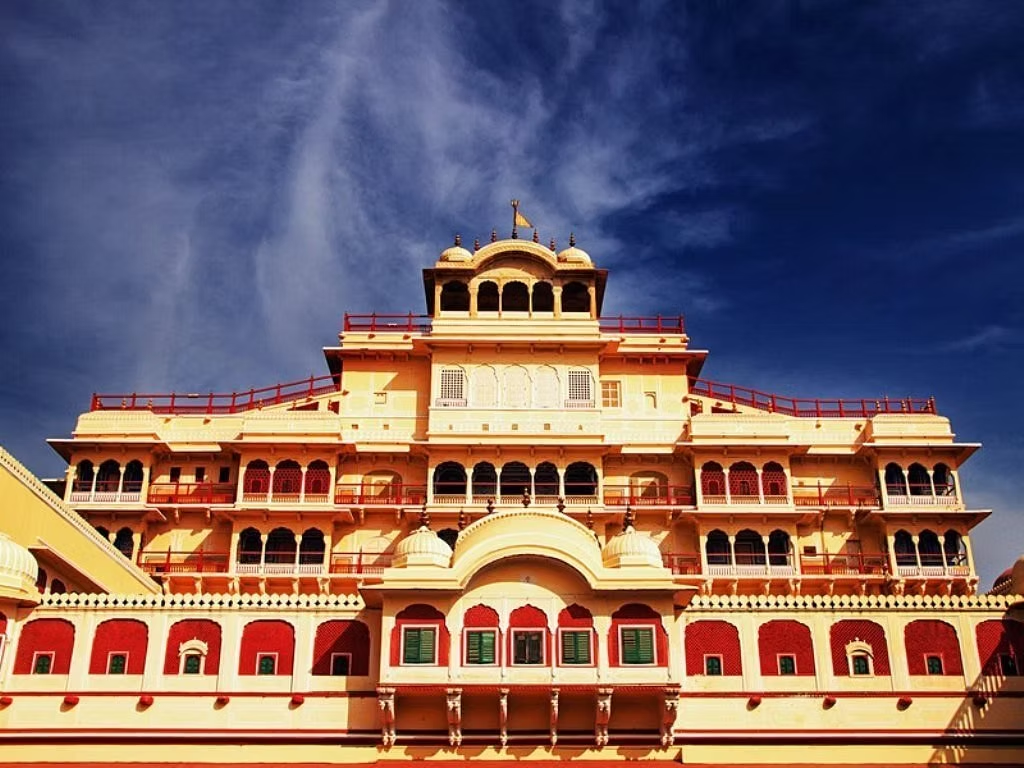
In this day and age of social media, taking aesthetic pictures of people, places, and even things has taken hold of almost everyone. So, finding the most visually pleasing places has become very important. In India itself, there are plenty of such places. All you need to do is pay attention to your surroundings. We’ve compiled a list of such “must-photograph” destinations to help you refine your list. Continue reading to find out the 13 most Instagrammable places in India that you just can’t miss out on! City palace Chamba camp Alleppey Munnar Valley of flowers Rann of Kuchh Dal lake Jodhpur Taj Mahal Thar desert Hampi Tsomgo Lake Ziro 13 Most Instagrammable Places in India India is a country that has innumerable locations to take your breath away. From the dense forests to the snow-capped mountains to the fine beaches, it has everything! Let’s take a more detailed look at some of the most Instagrammable places in India that you can pay a visit to for your next holiday: 1. City Palace Image by Trip Advisor The layout of the palace’s interior and exterior is without a doubt beautiful and vivid. The most distinctive aspect of the palace is the ornate gateways in the inner courtyard, known as Pritam Niwas Chowk. The Jaipur City Palace doors are the city’s most famous photographic backdrop after the Hawa Mahal. Make it a point to see these stunning doors while you are in Jaipur since they are painted with complex patterns, vibrant shades, and shimmering gold paint. Several Hindu gods are revered here, and the four entrances symbolize the four seasons. Go explore this pink palace and capture pictures wherever you can! Location: Jaipur 2. Chamba Camp Image by Trip Advisor Thiksey is situated in Jammu and Kashmir’s Leh district. This small community has grown increasingly well-known thanks to the picture-perfect views that make up a significant portion of its allure, as well as the opulent camps erected high above. The Chamba Camp is a high-end glamping destination that boasts some of the best scenery for picturesque views. When visiting Thiksey, pick one of the region’s lavish tents to stay in for a distinctive wilderness camping experience. Guests can only enjoy the scenery for a limited number of months each year, but the photos they take are guaranteed to be treasured for a lifetime. Location: Thiksey 3. Alleppey Image by Pick Your Trail In Alleppey, you can get the perfect Instagram shot of the gorgeous coastline and the clear blue water. Take a 3-hour boat ride or, at the very least, go on an overnight houseboat trip to really experience the hypnotic splendor of the water. As the houseboat lazily floats by the innumerable palm trees, watch as the world slows down around you. You will be amused by the diversity of wildlife as well as the floating supermarket, where you could shop in an unconventional way and find countless photo opportunities. Location: Kerala 4. Munnar Image by Holidify The hill town of Munnar is covered in symmetrical tea plantations, which are absolutely gorgeous. The most Instagram-worthy photos are taken in the local area’s wide green expanse of tea plantations and gardens. Munnar is enticing and fantastic for photography in India, offering everything from exquisite close-up shots of tea leaves to a panoramic view of the valleys. Additionally, you have the option to dress up in regional garb to further enhance the aesthetic appeal of your post. Anyone would like to get lost in this natural landscape because of the beautiful skies, lush hills, and spectacular mountains in the distance. Location: Kerala 5. Valley of flowers Image by Veena World Ever wanted to be surrounded by flowers wherever you went? Valley of Flowers National Park was created with that in mind. Each and every one of the more than 600 plants on display at this UNESCO site is ideal for adding some color to your Instagram account. There are more than 600 plant species in the park, five of which are globally endangered and unique to Uttarakhand. You could even pack a tent and set up camp right next to a flower field, which is an incredibly lovely scenario that you should undoubtedly film. It’s as if you’ve just unlocked the gates to heaven if a national park is established to celebrate the splendor of flowers! Location: Uttarakhand 6. Rann of Kutch Image by Country Holidays Inn and Suites The Rann of Kutch, a scenic desert in Gujarat, is also called as the Great Rann. The largest salt desert, which spans an area of 8,000 square kilometers, is the most breathtaking location. Just over the Tropic of Cancer is where the vast area of broken ground is located. This place is perfect for any photo shoot because it has miles and miles of marble-white sand! The ideal time to visit is generally considered to be in the evenings. The sun sinking over the white sand with hues of pink, yellow, and blue blending into one another overhead is undoubtedly a sight to witness. The heat is also less harsh at that time. Location: Gujarat 7. Dal lake Image by Wion The second-largest lake in Jammu & Kashmir is Dal Lake, which is also Srinagar’s most popular tourist destination. It resembles a real-life artwork thanks to the sharp reflection of the mountains in the deep blue water and the numerous boats scattered throughout the lake. In addition to the lake’s natural splendor, the houseboats and the floating market provide picturesque scenes. Late July and August are the most beautiful months to see the lotuses bloom. Make the most of your chance to ride on one of these boats if you want to acquire the
A Guide to the Perfect Week-long Vacation to Goa in 2022
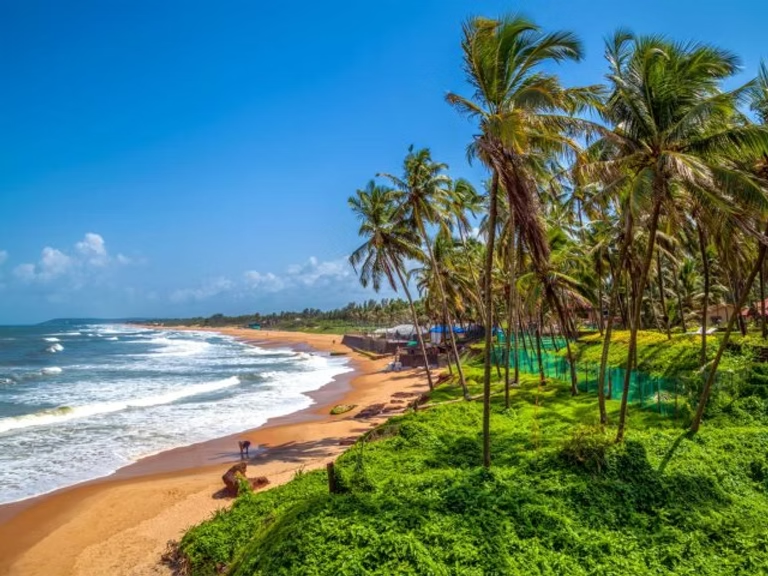
The lovely sandy beaches of Goa are what attract a majority of its visitors. However, there is far more to discover in this coastal paradise, including interesting museums, wildlife sanctuaries, stunning waterfalls, exquisite churches, picturesque Portuguese districts, and old temples. It is far more reminiscent of Europe than the other places in India. Hinduism, Christianity, Islam, Buddhism, Sikhism, and Judaism are all represented in the culture of Goa. So, you can see how people from many cultures and beliefs interact harmoniously. You can also comfortably speak to the people there in English. There are many ways in which you can go about spending your week in Goa. You could choose to laze around on the beaches and in your hotel room or maybe use up your time to party at a few of the nightclubs or maybe even go on treks. We’ve divided the plan into two parts; one that covers the North and the other that covers the South of Goa. Now, you don’t have to compromise on either! If you want to experience a little bit of everything, then just follow this guide to the perfect week-long vacation in Goa! Kick off your trip with the frenzy of the North The part of Goa in the North is like a boho haven and a popular party destination. The place is much more than that, though. Majestic forts, stunning cathedrals, hopping flea markets, and a wide range of other things of interest can be found scattered throughout a great number of locations. 1. Spend a day by the endless coastline Image by Limecar When in Goa, you must spend at least an entire day entertaining yourself by the beach. You can either choose to spend the day on a beach like Vagator which is a hub for tourists or on a quieter beach like Morjim, or Butterfly beach. While you’re there, you can also indulge in a few water sports or visit nearby pubs. There are plenty of activities available, such as parasailing and banana boat tours, so options are not something you’ll have to worry about. The beaches in the North of Goa are usually filled with people, so while you’re there you can always make some new friends and indulge in different activities along with them. Number of days: 1 2. Explore the quirky gems of Panjim Image by Happymind Travels The core of Goa is in Panjim. It has the ideal balance of everything—beaches, restaurants, shops, architecture, and more. Visit Dona Paula first thing in the morning. Street markets in the North allow you to enjoy Goa’s liveliness and charm while live music floods the ambiance. You’ll also be pleased to know that there are usually numerous food stands that line the streets. You should spend at least two days in Panjim. The first should be used up to take in the magic of the streets. Go on a shopping spree and get yourself some unique jewelry and souvenirs. You can also visit the numerous exhibits and museums that showcase some valuable and significant artifacts of Goa. On the second day, you should go sightseeing to all the monumental forts and learn about their history. Number of days: 2 3. Uncover the appeal of Old Goa Image by Travlics Your itinerary must include a stop in Old Goa if you want to discover the true essence of Goa and plunge completely into its history. The Basilica of Bom Jesus is a great place to start your day. From here, go to the Museum of Christian Art and the Se Cathedral. You can learn a lot about the history and traditions of Goa from these breathtaking locations. Travel to Miramar Beach from Dona Paula. The majority of Goa’s wealthy residents reside in Miramar and Dona Paula, where you can see the difference by the wider avenues and tree-lined streets. Number of days: 1 Unwind in the South Many people tend to overlook South Goa because it is a region of Goa that not many people explore. It doesn’t match the common notion of Goa being a place of loud music, partying, nightclubs, and a mix of restaurants serving food that isn’t the specialized Goan cuisine. Compared to the hectic life of North Goa, it is calmer, greener and cleaner, and undeniably more peaceful and that is exactly why it is ideal for a pleasant vacation. Cabo 4. Camp on Cola beach Image by Thrillophilia An exciting thing to do in South Goa is go camping by the beach, and Cola Beach is a great location to do that. The beach is flanked by a number of affordable and deluxe camps, so you can decide according to your budget. You don’t need a permit to camp at the beach, so those who prefer the old-fashioned method can also set up their tents in a calm spot on the beach. Camping in Cola may also be done in a fairly unusual fashion thanks to the lifeguards at the Beach who frequently rent out their huts for a night’s stay. Number of days: 1 5. Admire the horizon from Cabo De Rama Image by Adventure Buddha The Cabo de Rama fort is situated at the sea’s border, once you cross the slick off-track road. You’ll find it between the well-known South Goa beaches of Cavelossim and Agonda. You can reach the fort’s top by one of its two paths, and its on-site church via the other. By visiting this historical landmark, you will undoubtedly gain a wealth of knowledge about all the fort has experienced in the past. This fort is well known for offering travelers the most magnificent sunset views. Number of days: 1 6. Scavenge the streets of Palolem for little trinkets Image by Treebo Hotels Go to Palolem if the absence of people around you
The Ultimate Travel Guide to Ladakh in 2022
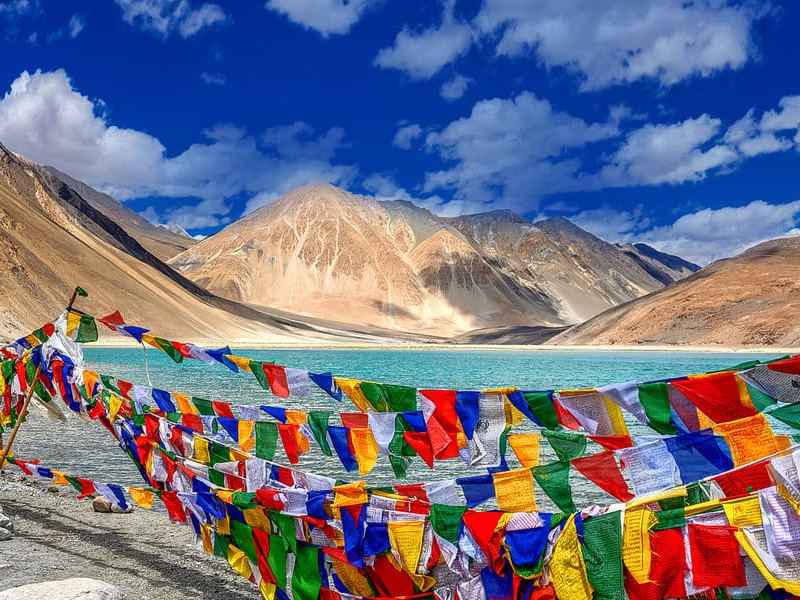
Known as the ‘Land of High Passes’, tucked away in the confines of the Kunlun Mountains and the Himalayas, Ladakh is a natural wonder. Considered to be one of the most beautiful regions in India, Ladakh is clothed in glory with barren cold desert, snow-draped mountains, quaint gompas, striking blue water bodies, multi-colored flags fluttering in the air, and sightings of Bactrian camels traversing the deserts. It is spectacularly an embodiment of all things beautiful and serene. The remoteness of the region coupled with rocky terrains of mountains and cold air breezing through is what makes Ladakh a perfect place for anyone seeking to experience some time away from the ordinary and revel in the extraordinary. A haven for adventure enthusiasts, the entire length of Ladakh is brimming with things to do, and places to visit and explore. Here is a list of guides you might want to consider before you plan your trip to Ladakh: Best Time to Visit Ladakh: When to go? The most ideal time to visit Ladakh would be in the summer months from June to September. The roads of the Srinagar Leh highway and Leh-Manali highway open up by May to mid-July and hence serves as the perfect time to plan a road trip along this famous and magnificent road. The roads are also open during the monsoon months from end-July to August but the sludge on the highway proves to be very challenging. By October, the roads are closed off from the world due to heavy snowfall. The only way to reach the place is by flight. But winter in Ladakh is very mesmerizing and an experience to cherish for a lifetime. How to reach Ladakh? By Air: The Kushok Bakula Rimpochee Airport in Leh is the best option to reach Ladakh. It is well connected to other major cities of India. Flight bookings are available throughout the year. By Train: Ladakh does not have a functioning railway station. However, the closest train station is Jammu Tawi in the city of Jammu. You can hire a taxi or bus to reach Ladakh from here on. By Road: The road network in Ladakh is well connected to other major cities of India. However, the roads are only open for six months of the year, and from November to April, the roads are closed due to heavy snowfall. However, the Delhi-Manali-Leh highway and Delhi-Srinagar-Ladakh routes are famous for their captivating views which makes for a memorable road trip. Places to Visit in Ladakh: Where to go? God has blessed Ladakh with some of the most beautiful and magnificent places on earth. Whether it is a long trek or a short trip, there are many places where you can visit and enjoy the natural beauty of Ladakh. These places are the perfect getaway to rejuvenate your soul. For the uninitiated, these places are some of the best places to visit in Ladakh. 1. Nubra Valley Credit: Getty Images One of the most beautiful destinations in Leh, Ladakh, Nubra valley is a gem waiting to be explored. From aged old monasteries to bountiful orchards, this region of Leh, Ladakh is sandwiched between Kashmir and Tibet. The breathtaking view of the valley where sights of dunes coupled with herds of Bactrian camels can be witnessed is what makes Nubra Valley even more appealing. 2. Zanskar Valley Credit: Trek and Trails An enchanting semi-desert region in Kargil, Ladakh, Zanskar Valley is truly a work of art. The sparkling clean rivers, snow-capped mountains, enthralling landscapes, and pleasant weather serve as a perfect destination to escape the hectic reality and relish in the best of nature. The mountain range of Zanskar is part of the Tethys Himalayas hence it offers a spellbinding view into the panoramic trans Himalayan region. 3. Pangong Lake Credit: Jagran Josh Pangong Lake or Pangong Tso is one of the most significant tourist attractions in Ladakh. Located at a height of almost 4,350 meters above sea level, it is said to be one of the highest altitude lakes in Ladakh. A beautiful water body so blue and serene that captivates anyone that visits the place, Pangong Lake also serves as a photographer’s paradise. The tall mountains surrounding the lake, ducks wandering on the banks, colored flags swaying in the wind, and the clear blue sky all add to the charm of the lake. 4. Tso Moriri Credit: Himachal Watcher An emerald lake known for its spellbinding beauty, Tso Moriri is a must-visit place in Ladakh. The sheer beauty of this lake combined with the vast expanse of the blue sky and the tall barren mountains as the backdrop with marshlands and wetlands around the lake makes the entire length of Tso Moriri majestic. Though lesser known than Pangong Lake, Tso Moriri rightfully stands as a tourist favorite for offering nothing but the best to its visitors. Things to do in Ladakh: What to do? If you are planning a vacation to India, you should know that the main attraction is Ladakh. There is a lot of beauty and adventure to be found in this region. This section enlists all the things you can do on your Ladakh trip. 1. Chadar Trek A thrilling and possibly one of the most exhilarating trekking experiences over the frozen ice carpet of the Zanskar river. Loved by adventure enthusiasts for its taxing yet exciting route, the trek is very strenuous and daunting even for experienced trekkers. The temperature drops below sub-sub-zeroes. Regardless of the difficulty, the nights spent in caves, sightings of exotic wildlife, traversing across frozen rivers with sparkling blue water flowing in gaps, and walking along the barren yet majestic mountains are what make this trek an experience to treasure for a lifetime. 2. Bactrian Camel Safari A famous fun and adventurous activity that can be experienced in
Spiti Valley Checklist: 15+ Tips So You Don’t Get Tricked
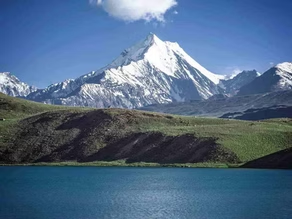
Whenever going to a new destination for a holiday or a weekend getaway, a lot of people tell you what to see there or what to taste or where to buy, or where to stay. But nobody really tells you about how to save yourself from spending money when it isn’t needed, or from people who might trick you, or things that you might have found for cheap from a different shop. All they ever do is make you regret it then, by saying,” Oh ho! You could have bought it from that shop instead of this one. That shop offers the best quality products at a better price.” And the regret that haunts you for life at times is the worst. Spiti in Summers. (Photo by Spiti Adventure) When planning a trip to a place that you haven’t visited before, it becomes a nightmare thinking about every possible way that it might go wrong. And when someone gives you some tips which help you ease the tension, it is just a blessing. And like any other place, Spiti Valley has its fair share of tricksters that may thug you for extra money. Spiti Valley in Winters. (Photo by Devil on Wheels) So here are some tips for you to follow to make your trip a tension-free one and not something that you’ll regret later. Check for availability/ permissions Health certificates required Documents required The acclimatization issues A no-network zone Emergency calls only The best month to visit The colder, the better. Time for some showers from heaven A longer stay Stock up money Fossils everywhere but no fuel? The adrenaline rushes What to take and what not to take. That is the question. Some new friends Local guide to be an expert Spiti Valley Checklist: 15+ Items 1. Check for availability/ permissions Do carry your driver’s license, Aadhar Card, or any other identification card to have a smooth trip. As the place is near the Tibetan outskirts, some places do require certain permissions. 2. Health certificates required Some places, where trekking is involved, require health certificates. 3. Documents required Do carry your driver’s license, Aadhar Card, or any other identification cards to have a smooth trip. 4. The acclimatization issues Spiti Valley is situated at a height of 3300 meters and hence requires each explorer to have significant acclimatization as going on such a height, especially for a person who lives in the plains or coastal areas, might become risky. It is usually advised to influence your adventure gradually, either by starting from Shimla or Manali. Those with lung or heart conditions should consult their specialist before planning the trip. 5. A no-network zone Due to the location of Spiti Valley at such a high altitude, there is almost no to zero phone network. Sims like BSNL and MTNL do work and hence it is always advised to take them for your trip to Spiti. Even then, during the winters, as the network poles might get covered with snow, the connectivity drops to zero. 6. Emergency calls only You can also use satellite phones at 2rs per minute at STD booths at Batal and Mudh villages for emergency calls. 7. The best month to visit Visit during the summer months from April to September as the cold is quite bearable and all the roads are open. The valley is picturesque, lush green, and beautiful to look at. 8. The colder, the better. The winters are very harsh and the valley looks like a cold dessert that is covered with snow from all sides. You can definitely visit if you are a fan of cold climates. Though you must keep in mind the extreme winters, (at times) closed roads, and a lot of closed tourist places. 9. Time for some showers from heaven If traveling during the monsoon season, be prepared for landslides, roadblocks, and overflowing rivers. The water from the rivers sometimes flows towards the roads, making it difficult to drive. Carry rain-appropriate clothes and luggage like rain jackets, water-repellent clothes, and open footwear like crocs or rain boots. 10. A longer stay As the weather is pretty surprising, especially during the monsoons and winters, do keep some buffer days as the roadblocks, landslides, snow, etc may extend your trip than you had originally planned. 11. Stock up money The availability of ATMs is pretty rare as you may only find them at Kaza. So, stock up on enough cash which lasts you throughout the trip. 12. Fossils everywhere but no fuel? Another rare sighting in Spiti Valley is the petrol pump. The only available petrol pump is in Kaza, so, fill your tanks enough to make your trip an easier one. 13. The adrenaline rushes Don’t plan a trekking trip out of peer pressure or the adrenaline rush, as some of the treks are extremely difficult for even experienced people. Keep in mind your stamina and health before going on a trek. 14. What to take and what not to take. That is the question. As some villages like Langza Village have an abundant number of marine fossils, as the village came into existence when the Tethys Sea dried up. Even though the fossils look very attractive, you must remember not to take them with you as this disturbs the natural balance of the place. At the same time, beware of the local people selling your fossils. Though it is always advised not to take the real fossils home in any form (bought or found), there may be people selling you replicas made of clay, in the name of real fossils, and that too, at a much higher price. While it is okay to buy replicas, do make sure that you are buying them from an
7 Breathtaking Things to do in Nubra Valley
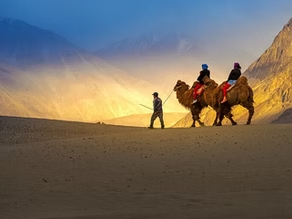
Located in the northernmost part of Jammu and Kashmir, the Nubra valley is heaven to the eyes. Its scenic beauty and mesmerizing landscapes are what make Nubra special. The Nubra valley is situated about 150 km from Leh and is popularly known as the orchard of Ladakh. Nubra isn’t just a gem of nature and its beauty but also encloses a history of ancient Buddhist tradition within it, making it a significant tourist attraction. Nubra provides a variety of exciting adventures, beautiful monuments, and amazing food. Here are some things to do in Nubra valley during your visit. Things to do in Nubra Valley Nubra Valley is a high-altitude cold desert in the Leh region of Jammu and Kashmir, India. It is sandwiched between the Karakoram and Ladakh ranges. It is one of the most popular tourist destinations in India. The valley is home to numerous breathtaking landscapes, including the world’s highest motorable road, the Khardung La. Nubra Valley is also home to the world’s largest sand dunes, the Hunder Sand Dunes. The valley is a perfect destination for adventure seekers and nature lovers alike. Here are some of the most breathtaking things to do in Nubra Valley: Bactrian Camel Safari Quad Biking in Hunder River Rafting in Zanskar Visit the Turtuk Village Cycling in Nubra valley Visit the Monasteries in Nubra Enjoy the beauty of the Yarab Tso lake Let’s have a look at each of them! 1. Bactrian Camel Safari via tourmyindia.com Camels have been the major mode of transport in Ladakh for centuries. With the closing of the silk route, many of these camels were left abandoned in Nubra. The Bactrian camel is known as the last remains of the silk route however the characteristic that makes these camels unique is that they have two humps instead of the commonly found one hump camels. While you may have done camel safaris before, these unique double-humped camels of Ladakh along with the breathtaking view of the Nubra valley make this safari a must-try thing Timings: 9:00 AM – 12:00 PM and 3:00 PM – 6:00 PM Best time to visit: July to September. 2. Quad Biking in Hunder via lehladakhindia.com While you might have seen Hunder in the training scenes of the movie ‘Bhag Milkha Bhag’, the location is also famous for its ATV bike riding experience. Surrounded by the great sand dunes of Hunder as well as riding on the biggest sand dune Khalsar which is about 10500ft makes this experience, not just fun but also visually pleasing. Enjoy the thrill of this quad biking experience and make this your very own Bollywood main character moment. Cost: 1000 INR Distance: 3km (approx) 3. River Rafting in Zanskar via aquaterra.in The Zanskar river is the first major tributary of the Indus and covers all of Ladakh. The river is famous for its rafting rides. River rafting in Zanskar is an adventure like no other as it makes you compete with the ongoing currents of water while simultaneously admiring the beauty of the river. Give yourself an adrenaline-push with this amazing rafting experience. Cost: INR 1500 to 1800 Distance: 35 km Best time to visit: June – August 4. Visit the Turtuk Village via wikipedia.org Until 1971 Turtuk was a part of Pakistan after which the Indian army seized control of it. The village is at a lower altitude of a mere 2900 m than the rest of the high altitude area allowing the villagers to farm apricots and walnuts creating a beautiful view of the landscape. The village is inhabited by the ‘balti’ people and consists of stone houses and stone cooling storage systems. The village is also famous for its Mosques which add to its ethenic ‘Balti’ roots along with its irrigation channels and traditional dishes. Best time to visit: April to July Tip: remember to try out the tasty traditional Balti dishes. 5. Cycling in Nubra valley via shutterstock The Nubra valley is the best place for a cycling expedition if you are a bike lover. This lively journey on the high altitude area of Ladakh will show you some of its most beautiful aspects on the move. The cycling tour will take you to villages and valleys while giving you the thrill of experiencing a ride down the biggest motorable roads in India. Common routes: Khardung La Pass, Lukung, Chang La Pass 6. Visit the Monasteries in Nubra via hikerwolf.com Buddhism is the major religion in Ladakh. It has influenced its rich culture and heritage. The monasteries in Ladakh are popularly known for their annual festivals, vibrant paintings, and pieces of Buddhist art that mesmerize the viewer. These Buddhist gompas are architectural marvels providing a soothing ambiance and alluring visuals. The Diskit and Samstanling Monastery are some of the famous monasteries in Nubra valley and provide an amazing view of the Nubra landscape. Best visited in : June to September 7. Enjoy the beauty of the Yarab Tso lake via jullayladakh.com The Yarab Tso lake located in the Nubra valley of Ladakh is the place to go to if you enjoy a breath of fresh air away from the bustle of the town. The 20-minute trek to reach the lake is worth the picturesque view. Located about 15km away from the Diskit region, the peace and quiet of the place alone give shelter to a stray mind. The Yarab Tso lake is of high sacred significance as a result of which swimming or camping around the lake isn’t permitted. The Yarab Tso lake has visuals that promise to stay in your memories and captivate you. This is a must-go place for all admirers of nature. Best visited in: July to September 8. Sightseeing at the Maitreya Buddha Statue [BONUS] via freepik.com The 106-foot-long Maitreya Buddha statue is an admirable piece of traditional art.

